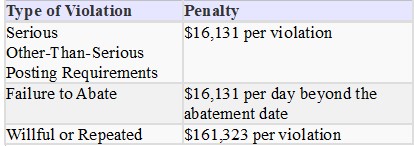
2 Minute Safety Training Talk
How Noise Affects Hearing
This is a sample or partial document
Download the full customizable and printable version
Understanding Hearing Loss
Hearing loss is a normal part of the aging process. Throughout our lives we are exposed to loud noises and physical conditions that add up to gradual loss of hearing. But many of us lose our hearing prematurely by failing to protect ourselves from excess noise both at home and at the workplace. Understanding how hearing works can help you realize the importance of protecting your hearing now, before it's too late.
How Hearing Works
The ear is composed of numerous delicate structures designed to carry sound waves to the brain. The hair cells in the inner ear are particularly important because they stimulate the auditory nerve which transmits impulses to the brain. The brain translates auditory impulses into the sounds that we hear. When the ear's hair cells become damaged due to excess noise exposure, the auditory nerve is not sufficiently stimulated, the brain does not receive the appropriate sound signal, and we fail to hear correctly. And, when hair cells are damaged by prolonged over-exposure to loud noise, they "die" and cannot be replaced, resulting in permanent hearing loss.
Excess Noise Exposure
Noise is measured in units called decibels (dBs or dBAs) Excess noise is generally considered to be exposure to 85-90 decibels or more over an 8-hour period. A typical automobile horn can be as loud as 120 decibels, but hearing a horn honk for 10 seconds is unlikely to cause hearing loss. If you had to listen to the horn blast for 8 hours straight, though, you could very well experience gradual, permanent loss of hearing. Or, if you work in a factory and are exposed to 80 decibels of noise over a 4-hour period, you might not be at risk. But, if you then went home and operated a power mower or tools, listened to high-volume music, or perhaps practiced at the shooting range, you could very well exceed your safe noise exposure limit.
Protecting Your Hearing
On or off the job, you can protect your hearing by wearing the appropriate personal protective equipment recommended for your tasks. Ear muffs, plugs, and canal caps can all reduce the amount of noise your ears are exposed to. It also helps to know the decibel range or noise level of some common activities and situations to see if you may be exposing yourself to too much noise. Remember that even loud vacuum cleaners, dishwashers, and home power tools can create excessive noise, so protect your hearing wherever you are.

GET INSTANT ACCESS
to THE MEMBERS LIBRARY
Safety materials created by safety professionals.
Access to the Safety Manager software.
Wide variety of safety videos and courses.
**Brand New** Safety Training Management System
Pre-Made Safety Materials Ready For Use
Created by experienced safety professionals & risk consultants. Saving you time, money, and risk of injuries.
95% of the work already done.
Below are the maximum penalty amounts, with the annual adjustment for inflation, that may be assessed after Jan. 15, 2024. (See OSHA Memo, Jan. 8, 2024).

**New OSHA HEAT 90 DAY**
>>Download Free HERE<<
**New 2024 OSHA 300 Form**
>>Download Free HERE<<
**Brand New**
Free with full membership subscription
Training LMS System
Ask The Safety Consultant
Safety Equipment Deal Finder

“SafetyInfo.com is the first go-to website for safety professionals and companies to use in establishing a solid safety program"
-Mike McKenzie, Certified Safety & Health Manager (CSHM), McSafety Solutions™
Note: You must have a full subscription to the Safety Library in order to use this material. Any use outside of your organization, for resell, or without an active membership is strictly prohibited and may result in prosecution under copyright infringement laws. Please contact us first, if you would be interested in reselling or using our materials for reproduction.
Inside the Members Library
Topic Index
Accident Prevention
Air Quality
Asbestos
Bloodborne Pathogens
Boilers
Chemical Safety
Compressed Gas
Confined Space
Construction
Construction Worksite
Cranes & Slings
Driver / Fleet Safety
Drug Free Workplace
Electrical
Emergency Management
Engineering Safety
Environmental
Equipment
Ergonomics
Fall Protection
Fire Safety & Prevention
First Aid
Flammable Materials
Forklifts
Hazard Communication
Hazardous Materials
Hearing Protection
Heat Stress
Hot Work
Housekeeping
Job Safety Analysis
Laboratory
Ladders
Lead
Lockout-Tagout
Machinery & Equipment
Material Handling
MSDS (SDS)
Medical & First Aid
Occupational Health
Office Safety
Off the Job Safety
Personal Protection
Process Safety
Record Keeping
Respiratory Protection
Silica Safety
Rules & Policies
Signs & Labels
Slips, Trips & Fall
Training
Terrorism Programs
Tool Safety
Vehicle & Driver
Violence Programs
Welding & Hot Work
Training Videos
Library Index
Training Materials
Videos/Courses
Talks
Articles
PowerPoint
Handouts
Training Overheads
Quizzes
Supervisor Briefs
Management Briefs
Safety Sessions
2 Minute OSHA Safety Talks
Pamphlets
First Aid Training
Supervisor Training
Hazardous Materials
Bomb Threat
Crossword Puzzles
Biological Agents
Forms & Documents
Forms
Checklists
Audit Guides
Inspections Guides
Signs & Labels
Environmental Audit Guides
Recordkeeping - OSHA 300
Sign & Label Maker
Safety Management Resources
Safety Manuals/Written Programs
Ergonomic Programs
Emergency Plans
Process Safety Management
Construction Safety
Occupational Health
Environmental
Topic Sheets
DOT Fleet-Driver
Hazardous Materials
Chemical Safety
Drug Free Workplace
Terrorism Programs
Development Guides
Safety Manager Software
Safety References & Graphics
Technical Safety Information
Posters
Topic & Fact Sheets
Development Information
Job Specific Safety Rules
Terrorism
Calculators
Safety Comic Strips
New Safety Training System
Schedule and train your employees with our materials. Add unlimited amount of employees. Record all progress and issue certificates. For group and individual training sessions.

